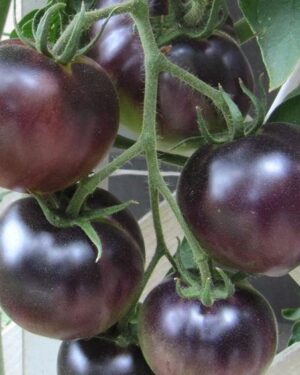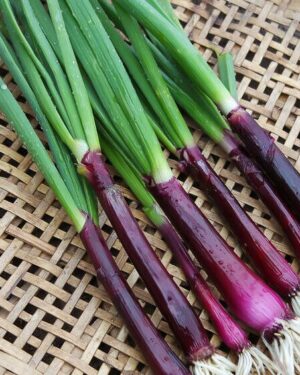Description
Organic CUCUMBER PASSANDRA F1 (GREENHOUSE)
Organic CUCUMBER PASSANDRA F1 (GREENHOUSE). An extremely productive all female F1 variety delivering large crops of medium sized fruits 18-20cm long. The fruits are slightly ribbed and dark green. Resistant to Powdery Mildew and tolerant to Mosaic virus and downy Mildew. This is a glasshouse variety and needs good warmth to get the best results.
Cultivation Advice
- Ensure the greenhouse provides optimal conditions: plenty of sunlight, adequate ventilation, and a stable temperature (ideally around 75-85°F or 24-29°C during the day and slightly cooler at night).
- Use high-quality, well-draining soil rich in organic matter. Organic compost or aged manure can be incorporated to enhance soil fertility.
- Start seeds indoors about 3-4 weeks before the intended transplant date into the greenhouse. Once seedlings have a few true leaves, transplant them into larger containers or directly into greenhouse beds.
- Ensure proper spacing (around 18-24 inches apart) to allow the plants to grow and spread.
- Maintain consistent moisture levels in the soil, ensuring it’s neither too dry nor waterlogged. Use drip irrigation or water at the base of the plants to avoid wetting the foliage.
- Maintain adequate humidity levels within the greenhouse, especially during flowering and fruiting stages.
- Install trellises or stakes to support the cucumber vines, encouraging upward growth and providing better air circulation. Proper support helps prevent fruit from touching the ground and reduces the risk of disease.
- Apply organic fertilizers according to the plant’s growth stages. Liquid organic fertilizers, compost tea, or seaweed extracts can provide additional nutrients.
- Regularly monitor for pests like aphids, spider mites, or whiteflies. Employ organic pest control methods such as neem oil or introducing beneficial insects.
- Prevent fungal diseases by maintaining good airflow, avoiding overhead watering, and promptly removing any diseased plant parts.
- In a greenhouse, hand pollination may be necessary. Use a small brush or gently shake the flowers to aid in pollination if natural pollinators aren’t present.
- Harvest cucumbers when they reach the desired size (typically 6-8 inches), firmness, and color. Regular harvesting encourages continuous production.
- Regularly prune excess foliage to increase airflow and sunlight penetration among the plants, reducing the risk of diseases like powdery mildew.
- Remove any yellowing or diseased leaves promptly to prevent the spread of infections.
- Maintain a stable temperature in the greenhouse. During hotter days, provide adequate ventilation to prevent overheating, and consider shade cloth to reduce excessive sun exposure.
- Apply mulch around the cucumber plants to retain soil moisture, suppress weeds, and maintain consistent soil temperatures. Organic mulch also contributes to soil health as it decomposes.
- Monitor soil pH and nutrient levels regularly to ensure they meet the cucumber plant’s needs.
- Introduce or attract beneficial insects like ladybugs or lacewings to help control pest populations naturally. Plant companion flowers or herbs that attract these insects.
- Harvest cucumbers promptly when they reach the desired size and before they become overripe. This encourages the plant to continue producing more fruit.
- Conduct regular inspections of the plants for signs of stress, pests, or diseases. Early detection allows for immediate intervention and can prevent further damage.
- Adjust care practices based on the seasonal changes within the greenhouse. For instance, modify watering schedules and ventilation as temperatures fluctuate.
- Use preventive measures to avoid common cucumber diseases. Proper hygiene, such as disinfecting tools and containers, can prevent the spread of diseases.
- Ensure that watering is consistent and adequate but not excessive. Avoid waterlogging, which can lead to root rot, and maintain even moisture levels in the soil.
- Ensure cucumbers receive adequate light within the greenhouse. Consider supplementary lighting if natural light is limited, especially during darker seasons.
- Maintain a consistent care routine, including watering, fertilizing, and pest management. Avoid sudden changes in care practices that could stress the plants.
- Regularly monitor the growth of the vines and adjust the trellis or support structures to accommodate their upward growth.
- Begin with healthy, quality seedlings. Strong seedlings have a better chance of thriving and producing abundant fruits.
- Periodically add organic amendments like compost or worm castings to replenish nutrients in the soil and promote healthy growth.
- Use organic liquid fertilizers such as fish emulsion or seaweed extract according to the plant’s growth stage to provide essential nutrients.
- Regularly scout for signs of pest infestation or diseases. Early detection allows for prompt action and prevents widespread issues.
- Water early in the day to allow foliage to dry, reducing the risk of fungal diseases. Avoid wetting the leaves excessively while watering.









Reviews
There are no reviews yet.